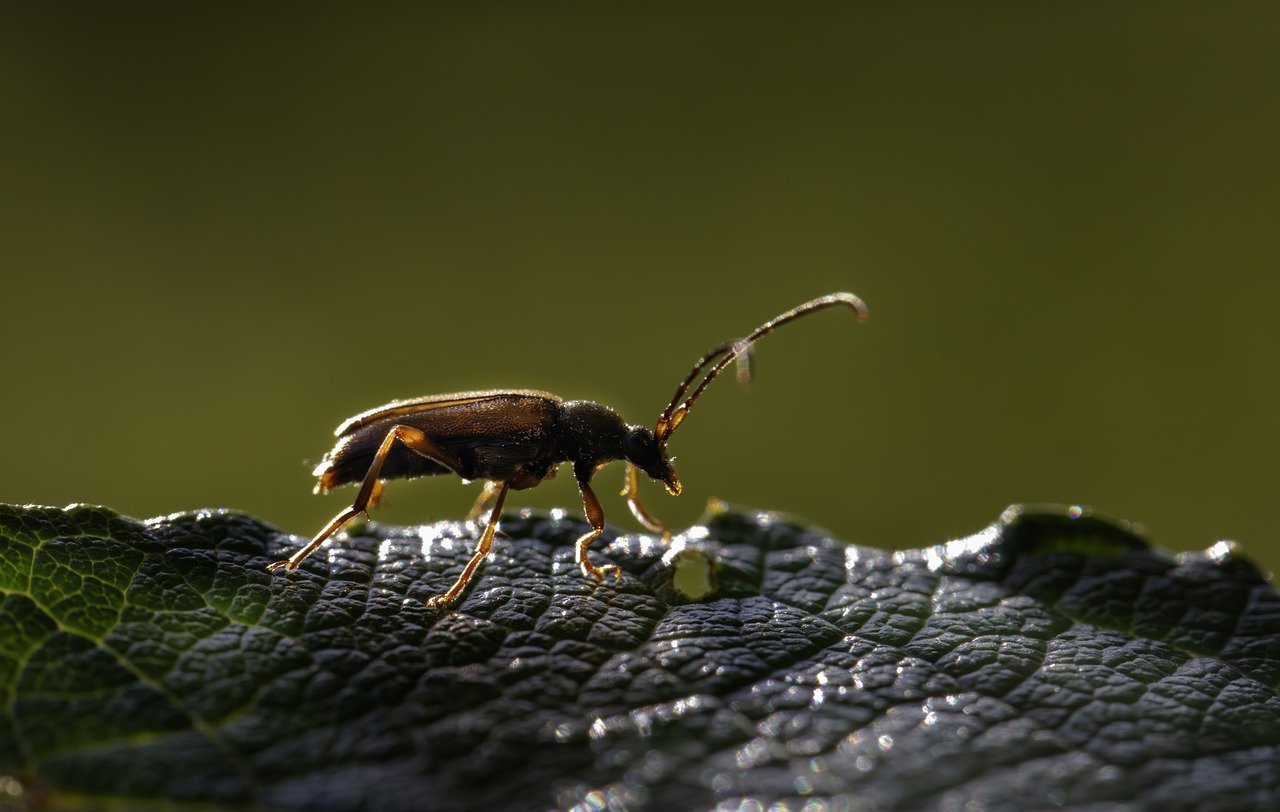The Bordered Click Beetle (Denticollis linearis) is a species of click beetle belonging to the family Elateridae. These beetles are known for their distinctive clicking mechanism, which they use as a defense mechanism to escape predators. Here are some detailed characteristics and information about the Bordered Click Beetle:
Appearance
- Size: Adult Bordered Click Beetles are medium-sized, typically measuring about 8 to 14 millimeters in length.
- Coloration: They have a distinctive appearance with a black or dark brown body and bright orange-red margins on the pronotum (the shield-like structure behind the head). The elytra (wing covers) are also dark with a fine, linear texture.
- Shape: The body is elongated and somewhat flattened, typical of many click beetles. The pronotum is slightly rounded and tapers towards the head.
- Antennae: They have relatively short, serrated antennae.
Habitat
- Preferred Habitats: Bordered Click Beetles are commonly found in woodlands, forests, meadows, and gardens. They prefer areas with decaying wood, leaf litter, or other organic matter, which provides a habitat for their larvae.
- Geographic Range: Denticollis linearis is widely distributed across Europe and parts of Asia. They are typically found in temperate regions.
Behavior
- Clicking Mechanism: One of the most distinctive behaviors of click beetles is their clicking mechanism. When threatened, they can flex their body, causing a spine on the underside to snap into a notch, producing a clicking sound and propelling the beetle into the air. This helps them escape predators and right themselves if turned over.
- Nocturnal Activity: They are primarily nocturnal and are attracted to lights at night.
- Feeding: Adult click beetles feed on pollen, nectar, and sometimes leaves. The larvae, known as wireworms, are primarily detritivores, feeding on decaying wood and plant material, but they can also be root feeders, which can make them pests in agricultural settings.
Life Cycle
- Eggs: Females lay their eggs in soil, decaying wood, or leaf litter.
- Larvae: The larvae, or wireworms, are elongated, cylindrical, and tough-skinned. They develop over several years, feeding on decaying organic matter and plant roots.
- Pupation: Pupation occurs in the soil or within decaying wood. The pupal stage lasts several weeks before emerging as adults.
- Adults: Adults typically emerge in late spring to early summer and are active during the warmer months.
Ecological Role
- Decomposers: As larvae, Bordered Click Beetles play an important role in the decomposition process by breaking down decaying wood and plant material, contributing to nutrient cycling in ecosystems.
- Pests: While they are beneficial in natural settings, the larvae can sometimes be pests in agricultural settings, feeding on the roots of crops.
Identification Tips
- Pronotum Coloration: The bright orange-red margins on the pronotum are a key identifying feature. The dark body and linear texture of the elytra are also distinctive.
- Clicking Behavior: Observing their characteristic clicking behavior can help confirm their identity.
Conservation Status
- Population: The Bordered Click Beetle is not considered endangered and is common across its range. Their populations are stable, supported by a wide range of suitable habitats.
- Threats: There are no significant threats to this species, though habitat destruction and pesticide use can impact their populations.
Interesting Facts
- Clicking Mechanism: The clicking mechanism is not only a defense strategy but also a unique form of locomotion that allows them to escape quickly from predators.
- Wireworms: The larvae, known as wireworms, are named for their tough, wire-like bodies, which allow them to burrow through soil and decaying wood.
In summary, the Bordered Click Beetle (Denticollis linearis) is a distinctive species of click beetle known for its bright orange-red pronotum margins and unique clicking mechanism. Found across Europe and parts of Asia, these beetles play important roles as decomposers in their ecosystems but can also be pests in agricultural settings. Their fascinating behavior and ecological significance make them an interesting subject of study in entomology.
Views: 353
Subscribe to the newsletter:
